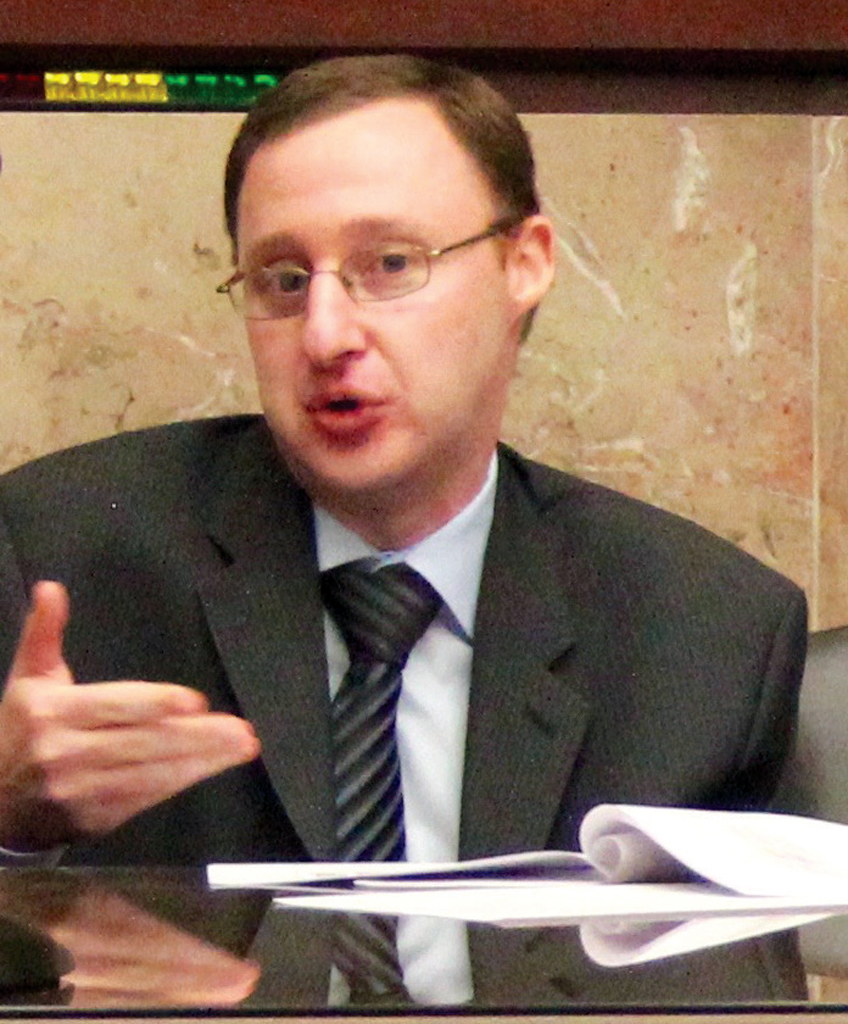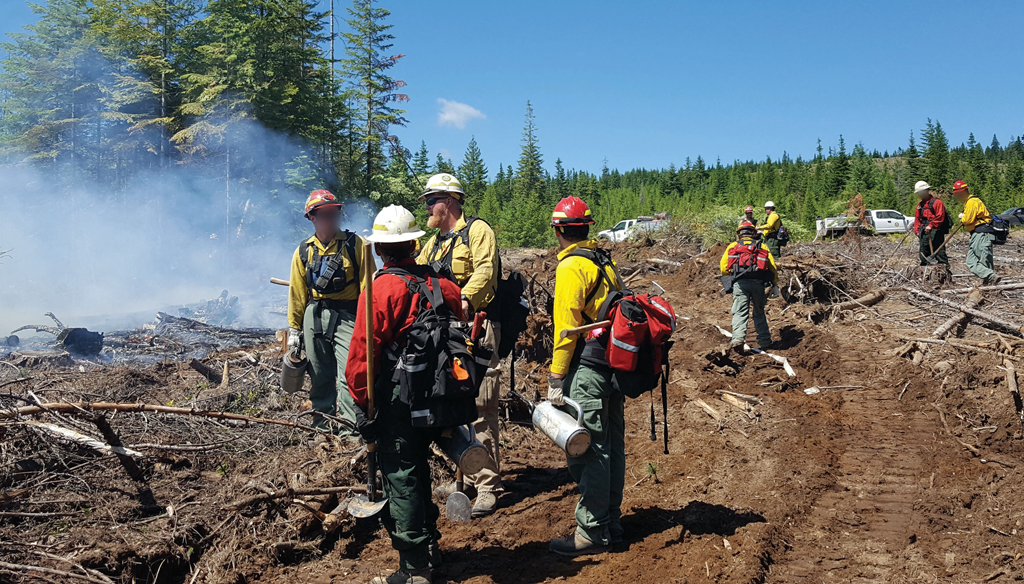At 7 a.m., teenagers are scurrying to dress and head to class. There are no parents or older siblings nearby to push them out of bed and out the door. And the commute isn’t long — just a short walk from prison bed to classroom.
But these young men at the MacLaren Juvenile Detention Facility in Woodburn, Oregon, are going someplace — and that’s a start, state educators and justice officials say.
The students meander from four different buildings, depending on their status — some as young as 15 and others who were sentenced as adults but placed in juvenile facilities — down long corridors to a central school.
“MacLaren is a regular school, and if you were to walk in you’d think you’re in a high school hallway,” said Deborah Martin, senior policy advisor for community services at the Oregon Youth Authority.
The students get the usual array of math, English and science. But MacLaren and most of Oregon’s other youth detention facilities also offer the chance to learn a vocation. An advanced auto mechanics class ties to a partnership with a local community college. Classes teach latticework and woodworking. Some students learn wildlife preservation and take advanced classes in fighting wildfires common to the Pacific Northwest.
The most advanced students, usually in their late teens or early 20s who have spent years in the facility and are ready to transition into the public sector, are allowed to work with local firefighters out in the fields.
“As a state, we’ve made a conscious decision that we can’t just give them a high school education, but give them a vocation and a chance to succeed in the work world,” Martin said. “For most of these kids, something wasn’t quite right about their life — that’s why they came to us. We want to help them get back on track.”
Oregon is considered at the forefront of efforts to improve the transition from juvenile detention back to public schools or into the workforce, according to education and juvenile justice experts.
In addition to schoolwork, the state has set up a system in which each teenager entering the juvenile justice system is assigned a parole officer who will stick with them until they exit the system.
The officers serve as case managers, arranging counseling, mental and substance abuse treatment if needed and, working with the teens, teachers and their families, devise an education and support plan as soon as they enter the system.
Transition officers
Additionally, Oregon provides some juveniles with transitional parole officers whose job is helping the teens and young adults in their first reentry months. What began as a pilot program four years ago with a single officer has developed into a statewide assistance program that has put about 100 teens into the workforce and helped many more return to the classroom.
Jim Kramer, chief of parole and probation for the Oregon Youth Authority, said transition officers stay in specific regions so they know about job opportunities and can build contacts in local school systems. They mostly support youth 17 and older.
All students leaving detention facilities in the state must be admitted into local schools. But “let’s face it, in some of these schools our students are going back to places in class with some of their victims, so there is some pushback,” Kramer said. “Our transition POs work to soften that landing and work with the school and student to come up with a transition plan.”
National trend to reduce recidivism
Oregon’s attempt to ease the transition from lockdown to society is part of a larger national trend that experts say is tied to a steep drop in juvenile crime and recidivism.
In the past two decades, the population of young people held in juvenile facilities or other forms of detention has been cut in half nationwide, according to a study by Child Trends, a nonprofit research organization focusing solely on youth and their families.
The figures are encouraging, juvenile justice experts say, and show that more states are using data and lessons learned from comprehensive studies (such as one from the National Center for Mental Health and Juvenile Justice in 2016) as blueprints for diversion and treatment programs that keep teens in school and ultimately make them far less likely to reoffend.
But the success of diversion programs has created a new reality for educators and justice professionals: Those who are locked up now are sometimes more hardened, more difficult to reach and present a challenge to educate and treat before and after they reenter society.
“What the data shows is that as incarceration rates have gone down, the population still incarcerated are higher risk and higher need, and recidivism rates still tend to be pretty high because it’s a challenging group to work with,” said Josh Weber, program director for the Council of State Governments Justice Center in New York City.
“It requires a more nuanced reading of data and a more sophisticated understanding of risk placement and how to tailor education programs to the individual,” Weber said. “The juvenile field has done a good job, much better than the adult system, of keeping kids from coming back into the system. But I think we’re still struggling with developing enough programs for mental health and substance abuse.”
Recidivism and dropping out of school
Educating teens held in facilities is crucial to helping them return to the classroom when they are released, experts said. But that’s not always easy, in large part because of circumstances students can’t control. Some teens are in locked facilities for only a few days or weeks, making it difficult for teachers to learn the best ways to help them learn. Nearly all students can be pulled from classes for court appearances or other reasons related to their legal issues.

Josh Weber, CSG Justice Center
“It used to be that 30 days before release planning programs would begin. Now, from the moment they are placed in facilities, we see families involved, treatment planning with staff, making sure kids get re-enrolled in school as soon as they are released.”
In all, two-thirds of teens released from juvenile facilities never return to school and “find themselves far behind their peers,” according to a study by The Sentencing Project, a nonprofit focusing on disparities in the justice system — adult and juvenile.
“A huge problem, and I’m not sure it’s talked about enough, is the lack of transfer of academic credits when students go from a facility back into a local school system,” said Kate Burdick, a staff attorney for the nonprofit Juvenile Law Center in Philadelphia. “When they are going to school in a facility, they think they are getting credit, and they should be. But when they go back to their old school — or sometimes it’s even worse because they are forced to a new school away from where they live — they come to realize the school districts won’t accept those credits.”
That leads to frustration for the students and increases dropout rates, Burdick said.
National guidelines and action plans
Several states and local jurisdictions have implemented new rules to increase the chances that students graduate when leaving detention facilities. For example, New York — pushed into action by a lawsuit and consent decree — has created “credit equivalency charts” that provide uniform standards for integrating students back into the classroom. That includes efforts to make sure students are enrolled in schools in the same district in which they and their family live, increasing the odds they stay in school.
Virginia and Washington state have introduced legislation that speeds up the time between students leaving detention and being enrolled in a local school system.
The federal government has also created guidelines in recent years, aimed at smoothing the transition from detention to graduation. In 2014, the U.S. Department of Education released guidelines for disciplining students, part of an effort to keep teens in school and out of the justice system.
The guidelines stressed the need for strong partnerships among mental health agencies, counseling, law enforcement and school systems — designed to help divert students who might be sent to the juvenile justice system into counseling or specialized school programs. But the guidelines also focus on helping schools and students adapt as they leave lockdown facilities and return to public schools.
In 2016, the Department of Education released a “reentry toolkit” that provided tips and resources for local jurisdictions to provide services for students returning to the classroom.
Another program designed to help both adults and juveniles reenter society, the 2015 federal Second Chance Act, overcame efforts by the Trump administration to slash its budget by 30 percent as of press time. On July 14, the House Appropriations Committee agreed to provide full funding for the project at $68 million with support from both parties, according to committee member Scott Taylor, a Republican representing Virginia. The vote is seen as a key step in the budgeting process.
There is still much work ahead, said Weber of the Council of State Governments. States must do a better job gathering and analyzing case data that will help them craft more effective education programs to help teens graduate high school when they leave detention, he said.
“The good news is that the field is more aware of the need for having a more robust reentry program, and the planning starts much earlier,” Weber said. “It used to be that 30 days before release planning programs would begin. Now, from the moment they are placed in facilities, we see families involved, treatment planning with staff, making sure kids get re-enrolled in school as soon as they are released.”
Despite the difficulties, Weber and others said there are several concrete steps jurisdictions can take to improve the chances teens graduate after incarceration. First and foremost is having mental health and substance abuse treatment programs inside the facilities and in the school systems.
“We’re struck by how few states have a dedicated mental health or substance abuse system,” he said. “The default in many instances is to handle those problems as criminal justice issues, and that’s not where they belong.”
Last year several groups focusing on juvenile justice and education issues combined to create a detailed, 10-point blueprint to aid reentry. The study and guidelines, created by the Southern Poverty Law Center, the American Bar Association Center of Children and the Law, the Juvenile Law Center and others, provides concrete examples and recommendations for states and local jurisdictions to follow.
Still, the success of any program depends on states dedicating money and time to ensure students have the best chance of graduating once they leave detention facilities, said Marsha Levick, deputy director and chief counsel of the Juvenile Law Center.
“There are software programs available, lots of innovative ways to engage students and tailor programs to individual needs,” Levick said. “But there has to be the will to do that.
“What’s always frustrated me is that these kids in locked facilities should have the same exact opportunities as kids on the outside. Yet we don’t hold facilities accountable for delivering the same quality of education. We have to really change that mindset if we want to see better outcomes.”
Trying to interrupt the school-to-prison pipeline
The 2014 U.S. Department of Education’s “Guiding Principles A Resource Guide for Improving School Climate and Discipline” articulates the federal government’s acknowledgement of inequity when it comes to school discipline:
“Nationwide, data collected by our Office for Civil Rights show that youths of color and youths with disabilities are disproportionately impacted by suspensions and expulsions. For example, data show that African-American students without disabilities are more than three times as likely as their white peers without disabilities to be expelled or suspended. Although students who receive special education services represent 12 percent of students in the country, they make up 19 percent of students suspended in school, 20 percent of students receiving out-of-school suspension once … and 23 percent of students receiving a school-related arrest.”
While the guidelines are nonregulatory, and “the extent to which states and school districts implement the suggestions in this resource guide is a matter for state and local school officials to decide,” it does provide 13 specific action steps designed to reduce suspensions and other out-of-school referrals.
For example:
- “Engage in deliberate efforts to create positive school climates.” This action item names groups of youth who are often disenfranchised — from those with disabilities to LBGTQ youth and young people of color. Specific goals may include reducing numbers of suspensions and expulsions and law enforcement referrals, and “identifying and connecting at-risk youths to tailored supports, or increasing the availability of quality mental health supports available for students.”
- “Train all school staff to apply school discipline policies and practices in a fair and equitable manner so as not to disproportionately impact students of color, students with disabilities, or at-risk students.”
“Remove students from the classroom only as a last resort, ensure that alternative settings provide academic instruction, and return students to class as soon as possible.”
































